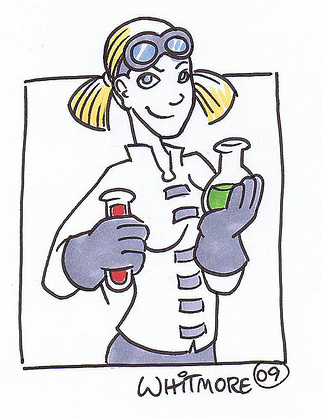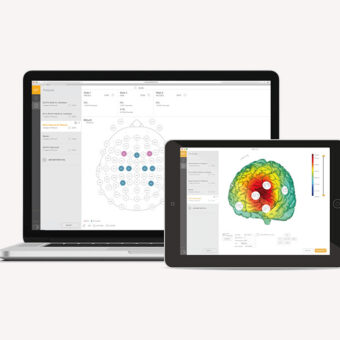After many years working in the neuroscience field, I have had the chance to read many interesting papers. In this post I would like to share some of the most shocking publications I have come across with you. Some are funny, some are shocking, some are weird, some are really interesting and some are all of that and more. I hope you enjoy them!
1 Be careful with statistics
Bennett, C. M., Baird, A. A., Miller, M. B., & Wolford, G. L. (2009). Neural correlates of interspecies perspective taking in the post-mortem Atlantic Salmon: an argument for multiple comparisons correction. NeuroImage.
This paper is really funny to read and indeed it teaches us something quite important: be careful on the way you apply your statistics to avoid false positives. The authors apply fMRI to a dead salmon and find out active voxels in the fish’s brain. After applying proper statistical corrections, no activity was found.
Excerpts of the paper such as this one will probably make you laugh:
“One mature Atlantic Salmon (Salmo salar) participated in the fMRI study. The salmon measured approximately 18 inches long, weighed 3.8 lbs, and was not alive at the time of scanning. It is not known if the salmon was male or female, but given the post-mortem state of the subject this was not thought to be a critical variable.”
Who said science isn’t funny?
Indeed, this paper won the Ig Noble Neuroscience Prize of 2012 for “demonstrating that brain researchers, by using complicated instruments and simple statistics, can see meaningful brain activity anywhere-even in a dead salmon.”
Note: The Ig Nobel prizes are sort of a parody of the Nobel prizes. As they state in their website:
“The Ig Nobel Prizes honor achievements that first make people laugh, and then makes them think. The prizes are intended to celebrate the unusual, honor the imaginative, and spur people’s interest in science, medicine, and technology.”
2 Get your brain (electrically) stimulated and get smarter!
Chi, R. P., & Snyder, A. W. (2012). Brain stimulation enables the solution of an inherently difficult problem. Neuroscience Letters, 515(2), 121-124.

The 9-dot-problem is a well-known example of think-out-the-box puzzles (see picture). In this paper, 33 subjects naif to this particular puzzle were asked to solve it. None of them could make it. After 10 minutes of Transcranial Direct Current Stimulation (tDCS), 14 subjects found the answer. Amazing, uh?The findings of this research shows that by using non -nvasive neurostimulation techniques, we become smarter. Actually this is quite an interesting research topic known as cognitive enhancement and more on that can be found in this related post.
Also, in this related work the authors show how the use of tDCS during sleep improves memory.
3 Reading minds
Shinkareva, S. V., Mason, R. A., Malave, V. L., Wang, W., Mitchell, T. M., & Just, M. A. (2008). Using fMRI brain activation to identify cognitive states associated with perception of tools and dwellings. PLoS ONE, 3(1).
In this research, 10 line-drawings were used (5 tools and 5 dwellings such as hammer and castle). When presented with an individual drawing, the researchers were able to identify which drawing the users were looking at, only using fMRI pattern activation information. A higher accuracy was obtained while identifying only the category.
What this experiment shows us is that the brain activation for abstract categories such as tools or dwellings are similar among subjects and more over, we can detect them just by “reading” their brains.
It is true that to perform this “brain-reading” we need to access a MRI, which is neither affordable nor easy to carry with you for experiments.
4 Scientific explanation of munchies
Soria-Gómez, E., Bellocchio, L., Reguero, L., Lepousez, G., Martin, C., Bendahmane, M., Ruehle, S., et al. (2014). The endocannabinoid system controls food intake via olfactory processes. Nature neuroscience, 17(3), 407-415.
It is a well-known fact that after consuming marihuana, people tend to feel hungry. Well, scientists have finally discovered the reason why! It seems that exogenous cannabinoids increase odor detection and this links to an increase in food intake…at least in mice.
I am quite sure that these findings apply to humans too.
5 Communicating with vegetative patients
Fernández-Espejo, D., & Owen, A. M. (2013). Detecting awareness after severe brain injury. Nature Reviews Neuroscience, 14(11), 801-809.
In this research, authors demonstrate that long-term vegetative patients still have awareness and moreover, are able to communicate. By using fMRI techniques, they were able to communicate with vegetative patients by asking yes-or-no questions. The patients were asked to imagine themselves playing tennis (yes) or navigating their houses (no). The differences in their brain activation allowed researchers to determine the answers to the questions they asked.
One of the questions was: “Are you in pain?” Fortunately the answer was negative.
For further reading, this relevant study shows that the use of noninvasive neurostimulation techniques (tDCS in this case) increases the awareness of vegetative patients.
6 Remote control of a charging bull
Although not published as a paper, this experiment is quite remarkable and pioneering in its own right, not to mention quite daring.
Dr. José Delgado was a spanish neuroscientist interested in brain stimulation. He invented the stimoceiver, a remotely controlled neurostimulator device. Being Spanish as he was, he decided to demo it personally with a charging bull. This can be seen in this video.
This early research has been continued ever since and even weird and ethically questionable products are being commercialized nowadays using similar techniques such as this one. Do we really need to control cockroaches with our mobile phones?
This somehow funny question is full of ethical implications. I’ll let you think about it for now and I might come back to this point in a future post. Thanks for reading and see you next time!

